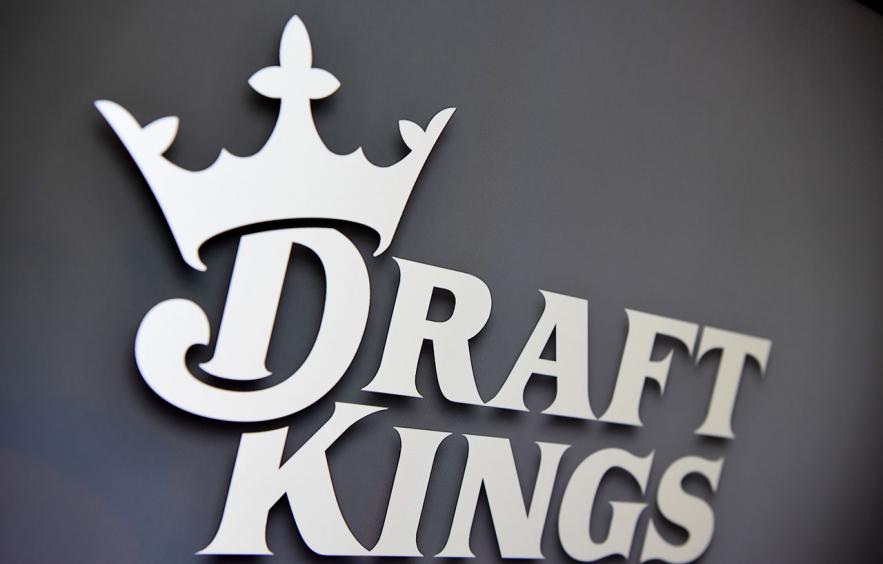DraftKings Reignmakers: A New Way to Play

If you're reading this on 4for4.com, chances are I'm about to tell you things you already know. If you didn't even know what DFS stood for before clicking on this link, this section is all for you.
Fantasy football comes in many flavors in 2022, a far cry from the pen-and-paper days of the 1990s, when players would have to track their redraft fantasy team's scores by checking the box scores in the newspaper. There are a huge number of websites to choose from to host your standard-scoring redraft league with 10 buddies from home, or your Superflex 0.5PPR IDP TE-premium dynasty league with all Flex spots and 30-player rosters. There's the Scott Fish Bowl, a massive charity league run by the titular creator Scott Fish, with 3,000 teams split into 12-team divisions. Bestball leagues have exploded in popularity, in which you draft a deep roster and move on, as your lineup is set automatically each week with your highest-scoring players at each roster position.
In each of these formats, you are invested in players for the entire season, unless you drop a player to add an available free agent, or trade players with another team in the league to invest in someone else, presumably for multiple weeks. Then there's Daily Fantasy Sports (DFS), another format exploding with popularity and offering a tremendous opportunity for fantasy managers who struggle to commit to players for an entire season.
More DraftKings Reignmaker Content!
The Different Fantasy Species
NFL DFS: The Nitty Gritty
In DFS contests, players draft rosters comprised of a set number of roster spots for a given week of the NFL season. The roster requirements can change contest-to-contest, with the most common makeup being 1 QB, 2 RBs, 3 WRs, a TE, a FLEX, and a DST. The available players are drawn from a player pool from each game played during the day on Sundays, with players from Thursday Night Football, Sunday Night Football, Monday Night Football, and any international games not included. This is known as the "main slate" for contests. Players can also enter a contest in which the player pool is derived from a single game, like Monday Night Football, or the two-game slate of Monday Night Football and Sunday Night Football.
The total number of entries allowed for each contest varies considerably, and players can choose based on the risk/reward of the cost of entry and prizes available. The field can be small - some contests have 45 total teams, competing for a pot that is split among the top 20 finishers, or as few as 2 or 3 teams competing for a prize. The prize amount is usually around double what the contest entry fee is. Smaller fields are referred to as "50/50" contests (or "Head-to-Head" contests for the 2-3 entry ones), and this grouping of small-field contests are usually referred to as "Cash Games".
Then, there are tournaments with much larger entry totals, sometimes over 440,000, where the prize pool is large enough that the player skilled and/or lucky enough to finish solo in first place wins $100,000. Many of these large-field contests have a "Guaranteed Prize Pool", or GPP, paid out regardless of how many players end up entering the contest, which is the acronym often used when discussing or analyzing them. Finally, some contests allow a player to enter as many as 150 drafted lineups into a contest (for 150 times the entry fee), while others limit each player to just a single entry.
Players are limited in some fashion in how they can construct their lineups, most frequently with a salary cap. The entry to a contest may be just $1, but for that entry, the player is given a fictional salary cap of $50,000 (this is DraftKings' setting), and each available player has a value assigned to them by the website running the contests. Players projected to score the most points are given the highest prices, and players with the lowest projections are priced down to a minimum floor, which is $4,000 in a typical $50K DraftKings contest. This way, competitors can't just draft all the players projected to score the most at each position, so identifying value and mispriced players at both ends of the spectrum is often the key to winning. If you're new to DFS and want a deeper dive, 4for4's DFS Strategy Hub is an indispensable collection of strategy pieces to read.
DraftKings Reignmakers Football
A Quick Introduction to Reignmakers
DFS contests have been available online in some form since 2007, when Fantasy Sports Live launched with contests that allowed users to draft a team from the current week of games, and compete against other players. DraftKings themselves just celebrated their 10th anniversary, and have been one of the top destinations for DFS contests for years, and this year they introduced a new twist on DFS contests with NFT-card-based Reignmakers Football.
New players trying Reignmakers are given a free pack of digital cards representing NFL players. This Starter Pack contains five randomized digital cards, but is guaranteed to include a quarterback and a skill player at each position. You could get wildly lucky and have each player from this pack startable and competitve, but chances are you'll want to supplement the cards you get from this pack, either via purchases of individual player cards, or purchases of more packs of various prices. Reignmakers contests are structured similarly to existing DraftKings DFS contests, but unlike traditional DFS Reignmakers contests are free to enter. You just need to have enough cards in your collection to field a complete lineup for a contest.
Reignmaker Digital Cards: Rarity Tiers
There are five tiers of rarity for cards: Core, Rare, Elite, Legendary, and Reignmaker. Each card is assigned a serial number out of the total available cards for that player at each tier. A Core card can come from a set with a total available count as high as 58,825 for cards from the Core 2022 SuperStar Set, to Reignmaker cards that have just a single card available. As the rarity of a card increases, so does its value. These tiers correspond with available contests that require a certain number of cards from a given tier to enter. The higher the tier of cards required for a contest, the higher the available prize, and as the tier level rises, the field shrinks.
Reignmakers vs Traditional DFS
SuperStars and Salary Caps
If you've played DFS, you're probably familiar with playing in a GPP and hoping to nail that minimum-salary player who vastly outperforms expectations and gives you a shot at cashing. The first big difference you'll notice when entering a Reignmakers contest is that there is no salary cap. The value of the player cards is defined by their value on the marketplace. You're drafting players from your own collection of digital cards, so the player pool available to you is limited both to the cards you own and to the players on the NFL teams scheduled in the slate of games included in the contest.
In lieu of a salary cap, DraftKings assigned 17 player cards with "SuperStar" status in August, and you can only play one SuperStar player per lineup. Also, the tier of contest you choose limits you to using only a SuperStar card of the same rarity tier or higher. After the completion of the Week 8 contests, 7 players were removed from the list and 5 new players were added, resulting in a list of 15 SuperStars you can see at this link.
Reignmaker Contest Strategy: You Must Adjust
The SuperStar designation effectively serves the same function as a salary cap, but it's not a one-for-one comparison. Because the list doesn't account for all of the top weekly performers at each position, and because it has been set and unchanged for the first 8 weeks, it is much more feasible to create lineups with top-tier projected players at nearly every position. This is borne out by recent results, like the winner of the Week 8 Elite-tier main slate "Fiat-Frenzy" contest:
QB: Kyler Murray
RB: Christian McCaffrey
WR: DeAndre Hopkins
WR/TE: A.J. Brown
FLEX: Alvin Kamara
The contest has a prize pool of $250,000 and pays out the top 1,042 regardless of how many entries there are, with the winner taking down a $100,000 prize, 867th-place winning $75, places 868-917 winning an Elite Plus Pack (containing a single card at Elite tier or higher) and places 918-1,042 winning a Rare Plus Pack (a single Rare or Elite card). Week 8's contest had a total of 2,102 entries, meaning nearly 50% of the field cashed! The barrier for entry is pretty high here, as the current marketplace value of the cards in this lineup is over $4,000 total, but when 4th place pays out $5,000 and you can enter these cards in this contest each week, it starts to make more sense.
The contests technically have unlimited maximum entry totals, and various entry limits for one account ranging from 150-max to single-entry. But keep in mind, cards entered into a contest are locked for play in another contest, so in order to enter 100 lineups in a contest with 5 roster spots, you would not only need 500 cards (100 cards at each position, one for each lineup), but you would need 500 reasonably playable cards at each position. So, the marketplace cost ultimately does more to limit how many players enter multiple contests, not to mention how many enter multiple lineups in a single contest.
This doesn't mean lineup strategy is thrown out the window, as you still need to have some differentiation from the field, even if it might be limited to one or two roster spots, and even if the above team's differentiation was DeAndre Hopkins at 3.11% drafted, whose drafted percentage was likely over 10% in traditional DraftKings DFS. This is the second big thing that differentiates Reignmakers contests from traditional DFS contests. While players can use projections intended for traditional DFS as a guildeline for how popular a player selection might be on Reignmakers, the drafted percentages for a given player will ultimately be much lower because of how quickly that percentage drops after the uber-chalk.
This makes lineup decisions involving SuperStar players even more important, as you simply must hit when choosing the top options at each position to have any chance at the top prizes, and many of the top options are SuperStars. With the recent additions of Jalen Hurts, Joe Burrow, Nick Chubb, and Tyreek Hill to the list, DraftKings has adjusted shrewdly to line up more closely with 2022 performance. Of course, this will also create opportunities from Week 10 onward when a non-Superstar player projects above most of the list at his position.
Market Value and Serial Count
There are a couple of final aspects of Reignmakers to consider if you're used to playing traditional DFS (or if you've not played DFS at all). First, because the card values are determined by the marketplace, there are marketplace inefficiencies that can be used to your advantage. "Out Of Sight, Out Of Mind" is a very applicable phrase here, as a player who has missed time with an injury can frequently be had at value, with so many players focused on the current week's matchups.
The same can be said for recent player performance, as you can sell a player's card at maximum value who's just had an unexpectedly great game, but whose underlying performance metrics don't support a continuance. Then you can turn right around and use your earnings to buy a player at value who just had his season-worst output but has an easy remaining schedule or even just a great current-week matchup.
Second, it's important to consider the serial number of cards when buying a player. Those selling cards on the marketplace are doing so for various different reasons. Some are just looking to cash out as quickly as possible, some are focusing on higher tiers and liquidating their Core cards. Whatever motivates the seller, it is common to see someone selling a card with a serial number in the low triple digits for the same price as an identical card with a serial at 1,000+.
Aditionally, if the low price for a card is $9.99 with a higher-serial, it may be worth going for the card listed a dollar higher but with a far lower serial. Tiebreakers are determined in Reignmaker contests by adding up the serial numbers for the cards in two identical lineups, and the lower total between two teams earns the victory. Serial counts have been the difference between players winning a top prize and a player with the same lineup getting dropped to a much lower prize tier.
Pick A Lane
Elite contests might offer the highest +EV value, but they require a very high investment from a more casual player, and you ideally you want to be somewhat risk-averse. Don't feel like you need to aim for higher-tier contests until you either have the bankroll to support it, or you've gotten extremely lucky with some packs, or at least until you have a handle on the Reignmaker contest landscape.
Even at the Core level, if you want to profit, ideally you don't want to play in only the Fiat Frenzy contest every week, where the top prize is enticingly large, but is also earned at a much lower percentage than many of the single-game contest prizes. In the same way you want to balance cash games with tournament play in DFS, Reignmaker Bankroll Booster contests are a great way to grow you collection and bankroll, offering a much greater chance at cashing week-to-week.























